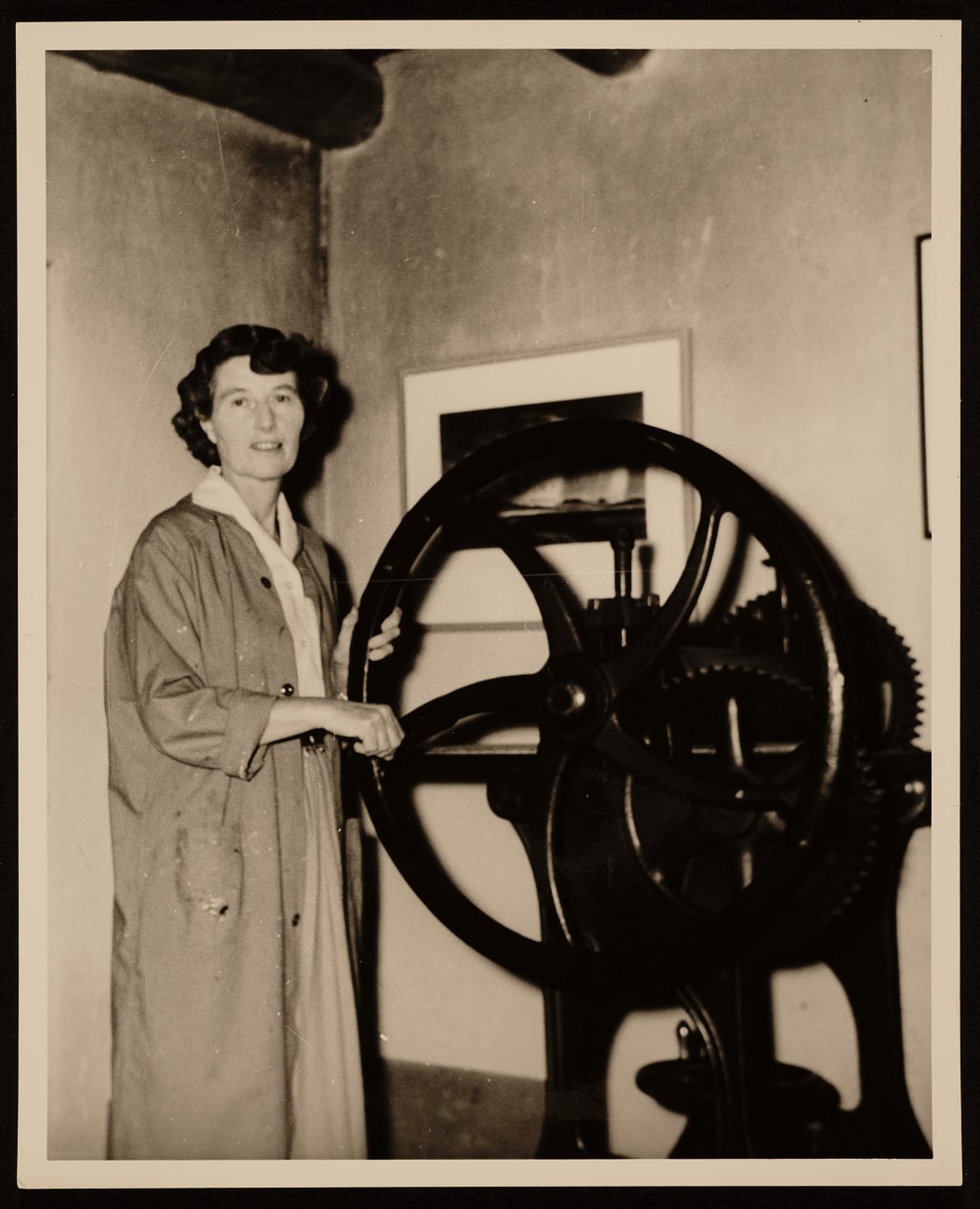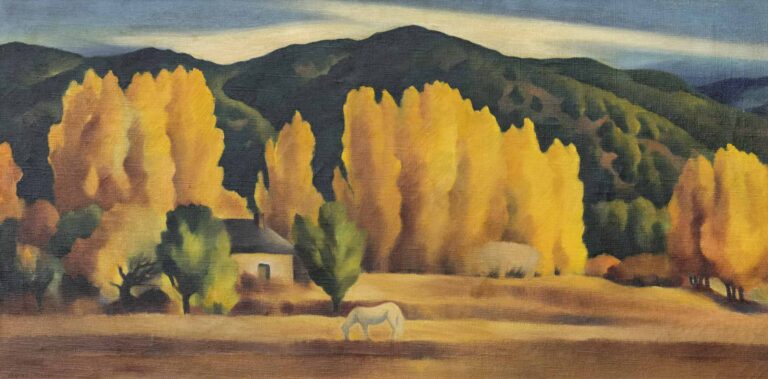Born Alice Geneva Glasier, Gene Kloss was already a highly respected California printmaker when she made her first trip to Taos, NM, for her honeymoon with her husband, musician and poet Phillips Kloss, in 1925. She brought her etching press on that trip and made prints from their campsite in Taos Canyon. “We bought a sack of concrete and set it up on a stump in the woods and I printed my plates there,” she explained. Kloss would later claim that she was “a New Mexican from then on.”1 She would spend the next twenty years traveling between California and New Mexico before settling permanently in Taos.
The New Deal allowed Kloss to continue to succeed as an artist. “[The New Deal] was a very pronounced help to me in my career because the government subsidy alone gave it dignity and importance,” she said in a 1964 interview, continuing, “and their . . . attitudes towards the artist in their free expression and pulling the most out of one to do your best technically, and the amount, and the result of speeding you on your way in your creative work.”2
First, for the Public Works of Art Project, Kloss created a print series of nine New Mexico scenes that were reproduced and distributed to public schools across the state. She was then employed by the Federal Art Project to create etchings, oils, and watercolors. “They went to galleries, museums. Lots of them went to Washington for the offices,” Kloss recalled. Kloss won the Eyre gold medal at the 1936 exhibition of the Pennsylvania Academy of the Fine Arts, and in the two decades following the New Deal, her work was collected by many of the country’s major museums. Her paintings explored the landscapes, cultures, and people of New Mexico, and she appreciated the New Deal’s emphasis on regionalism. “I think it [the New Deal] stimulated an interest in art. Because people in outlying places who had never seen anything had murals in their post office and received some of the easel pictures or prints to hang in their schools and their public buildings. I think it is one thing that started the public interest in art.”3


